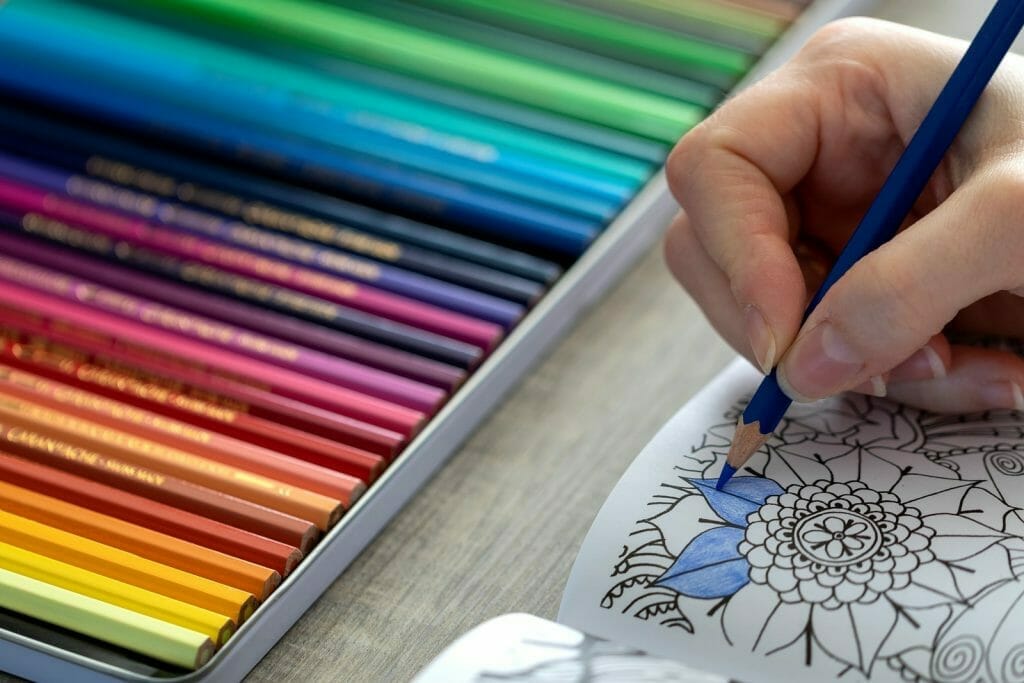Colouring books are a traditional pastime for children, offering a rewarding yet undemanding occupation. Following the boom that began in 2015, they are now also popular with all ages. Research has proved that colouring can have therapeutic mental health benefits, and many people find them soothing in these troubled times.

There’s plenty of choice available, from adult humour to abstract patterns, and hybrid creative project books. If you fancy a go at creating and printing your own colouring book, here’s some quick tips to get you started. Of course, there are no rules and you can let your imagination take over, but sometimes a few starting pointers are useful!
1. Work out the size and page count. Knowing how many pages you need to fill will make everything else easier. It’s entirely up to you, but the most common sizes are A4 and A5. Page counts are always even numbers. Anything up to 84 pages can be printed as a booklet; a higher count will need a more expensive printing method such as paperback.
2. Work out your illustration style. If you are confident in your ability to sketch accurately, then you can tackle any style. Precise, clean lines are key; impressionist scribbles won’t translate well! If you are not keen on realistic drawing, then sticking to abstract patterns or simple cartoon characters might be easier.
3. Pick a theme for your book. This will make it easier to pull together a series of images. Who is your audience? If it’s a children’s book, animals are an ever-popular choice, as are fairytale and cartoon characters. Adults books often feature droll humour, in the style of the Ladybird Books for Grown-ups. Pick something that suits your illustration style.
4. Find your medium. You can start with a traditional sketch book and pencil, and then darken up your lines with a fine-tipped black pen, erasing any visible pencil lines afterwards. Alternatively, you could use a digital drawing programme such as Adobe Illustrator, which can be operated with a pen and tablet.
5. Test out your work. Once you have completed a few illustrations, make some scans or photocopies and have a go at colouring them. Are some images full of too much fiddly detail which isn’t balanced out by larger areas? Or are some too simplistic to hold your interest? Do some fine tuning so each page holds a good balance of space and detail.
6. Don’t forget to design a front cover! If you plan to sell your book commercially, attractive colourful cover art is essential. Have a look around at successful published books for some inspiration, and make a mood board. Otherwise, you could always hire a professional graphic designer or book jacket artist.
7. Test out some paper weights. The choice of paper is especially important for a colouring book. Too thin— pens and water-based paints will leak through and spoil underlying pages. Too shiny—some inks will just slide off it and pencils won’t take easily. Check out what papers your chosen printing service stocks before making a decision.
If you are looking to print your own colouring book, then contact us today!
Click here to order booklet printing UK
Looking for a reliable printing company?
Get an instant quote